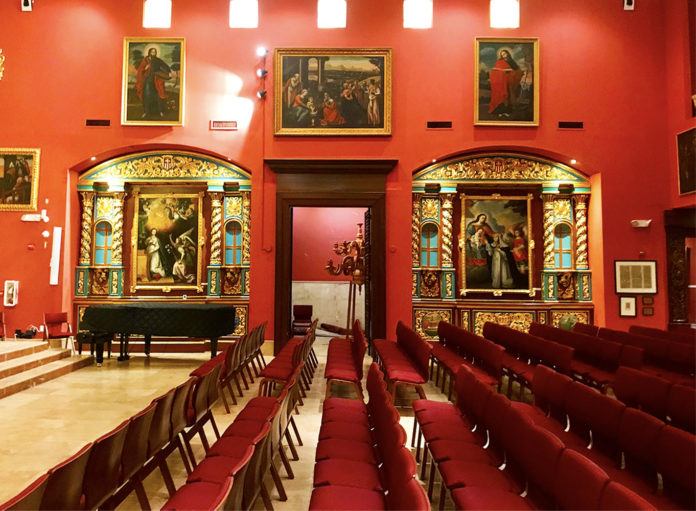INTERVIEW WITH DR. CAROL DAMIAN, CURATOR OF THE CHAPEL OF OUR LADY OF LA MERCED/MIAMI/COLONIAL LATIN AMERICAN ART
COLONIAL LATIN AMERICAN ART IN SOUTH FLORIDA/ THE CHAPEL OF OUR LADY OF LA MERCED IN ALLAPATTAH, MIAMI.
INTERVIEW WITH ITS CURATOR DR. CAROL DAMIAN
By Milagros Bello

Even in these ongoing pandemic struggling times, we have had the great privilege of discovering a hidden jewel of Colonial Latin American art in Miami, the Chapel of Our Lady of La Merced in Miami. We have also had the great opportunity of interviewing its curator, Dr. Carol Damian, and how she is organizing this valuable collection. The Chapel of Our Lady of La Merced is located in the compound of the historic Corpus Christi church in the Allapattah neighborhood, and it lodges an important Latin American Colonial collection under the Colonial Florida Cultural Heritage Center. Curator Dr. Carol Damian is actively organizing the curatorial project, the restoration of works, and the cultural plans for the undergoing developing of the project. Precious original paintings, sculptures, and other colonial artifacts are in the hands of this passionate expert who shares with us her perspective.
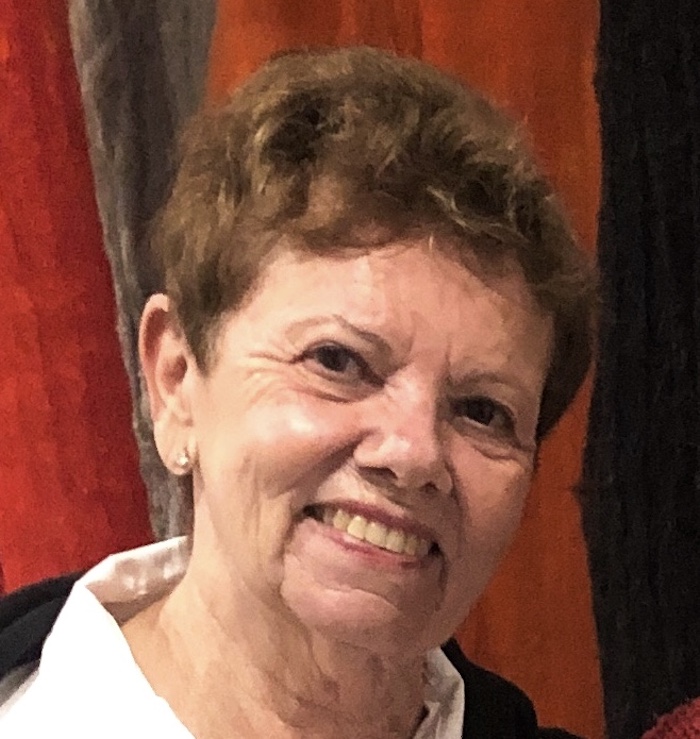

MILAGROS BELLO: Dr. Damian, based in your expertise in Colonial Latin American art as well as your well experienced background as former director of the Frost Art Museum and former chairperson of FIU’s Department of Art and Art History, and author of The Virgin of the Andes:
Art and Ritual in Colonial Cusco (1995), as well as the coeditor of Popular Art and Social Change in the Retablos of Nicario Jiménez Quispe (2005), I understand you are entrusted the task of curating the Colonial works in the La Merced Chapel in Allapattah, what is your main undertaking for this important mission?
CAROL DAMIAN: My academic interest has long been in the Colonial Art of the Andes, and the opportunity to curate a major collection of Colonial art is a dream, and a very unique undertaking that I could not refuse. I was already familiar with much of the collection which belonged to Bill Morgenstern, and it was wonderful to learn that it was to be part of the collection to be exhibited in this beautiful chapel.

MB: I understand the Colonial Florida Cultural Heritage Center is a part of the historic Corpus Christi Catholic Church, and includes two buildings, “La Casa” and the “The Chapel of La Merced”. Tell us more about this amazing jewel we have in Miami.

CD: The Colonial Florida Cultural Heritage Center has its main offices in La Casa on the property of Corpus Christi Church. It brings together collections of Cuban memorabilia, maps, books, and paintings with a focus on Cuba and the Andes. It houses an especially important archive of Colonial documents from Spanish Florida, South and Central America and the Caribbean and a library of historic material focused on very early Florida that will be an excellent research source in the future.
The Chapel of La Merced is a little jewel that is inspired by chapels in the Andes. The interior is Baroque with carved and gilded altars and houses a beautiful collection of Colonial Art from the Andes, Mexico, and South America. The collection includes paintings, statuary, and religious objects.
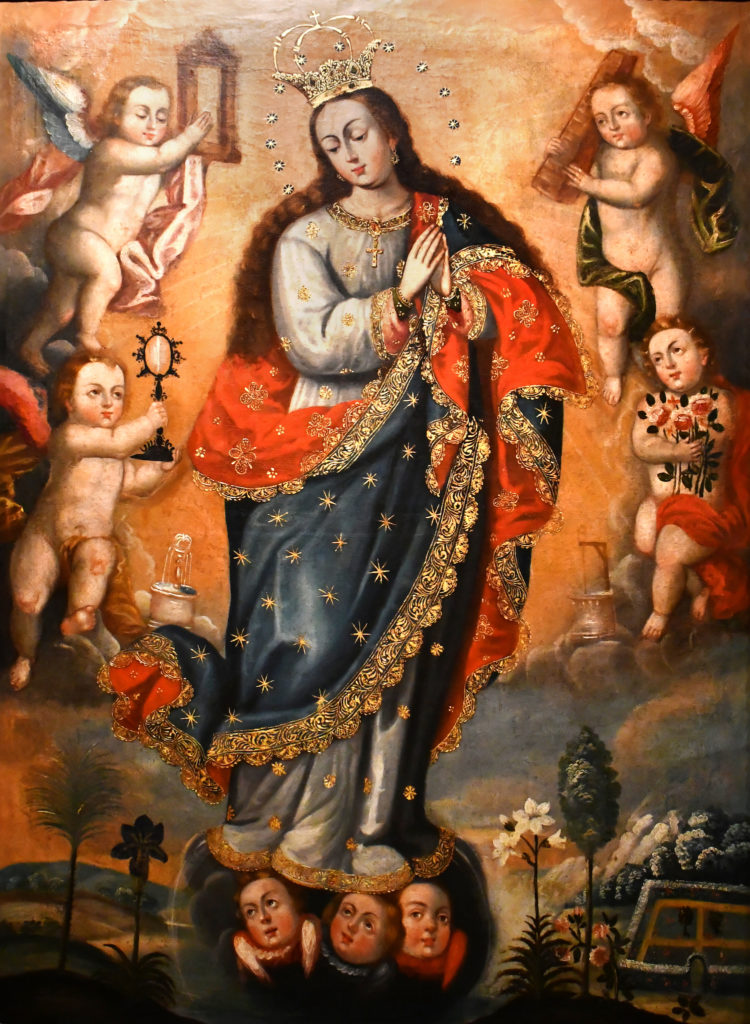
MB: How was this collection of Colonial baroque art formed? I understand the Corpus Christi Catholic Church long-time pastor Father Jose Luis Menendez is the soul of this project, and that he has been key in the undergoing of the collection and the Chapel interior architecture.
CD: Yes, this project is the vision of Father Menendez and the talented team who have assisted over the years, project manager, pro bono attorney, conservators, construction workers, etc. For many years, Miami residents and the parishioners of Corpus Christi have donated works of art to Father Menendez. Over time, as the collection grew, he had the vision to bring beauty to his parish and celebrate the heritage of the people and to build an Andean-style chapel as a museum to house the works of art. The chapel is a museum, a concert hall and a religious institution and meant to be a gift to us all.

MB: What are the most important patrons and collaborators in this initiative?
CD: Over the years, many donors, collectors, and collaborators have been involved in this project, beginning with the Morgenstern Collection that serves as the basis for the installation of works in the chapel. There are also key supporters from Bolivia, responsible for much of the carving and other objects, and local businesses who have contributed materials for its construction. Many scholars use the libraries and assist in research, as do other volunteers who assist in the library and with collections. There is a small staff and a team of volunteers that generously offer their time and expertise.
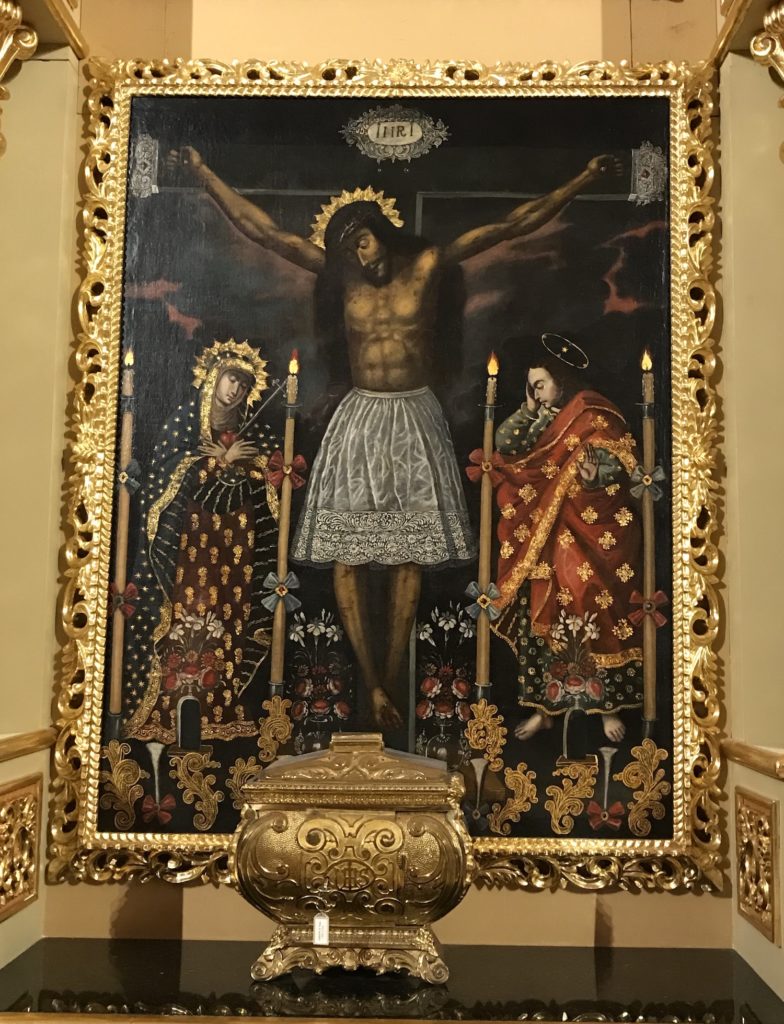
MB: What are the most important works you have in the collection? I understand they come from different origins and donations. Any specific ones?
CD: Yes, the collection has been created from different donations, purchases, and from different countries in Latin America. Among my favorites are the altarpieces dedicated to the Virgin Mary, especially the Virgin of the Immaculate Conception, by an anonymous artist from Cusco. It is a perfect example from the Cusco School, the first and most important organization of native artists in the Americas, and contains all the iconography ascribed to her image: beautiful, stenciled garment, golden crown with radiances, flowers, crescent moon, and she is surrounded by the symbols of the Immaculate Conception: lilies, spotless mirror, fountain, etc.
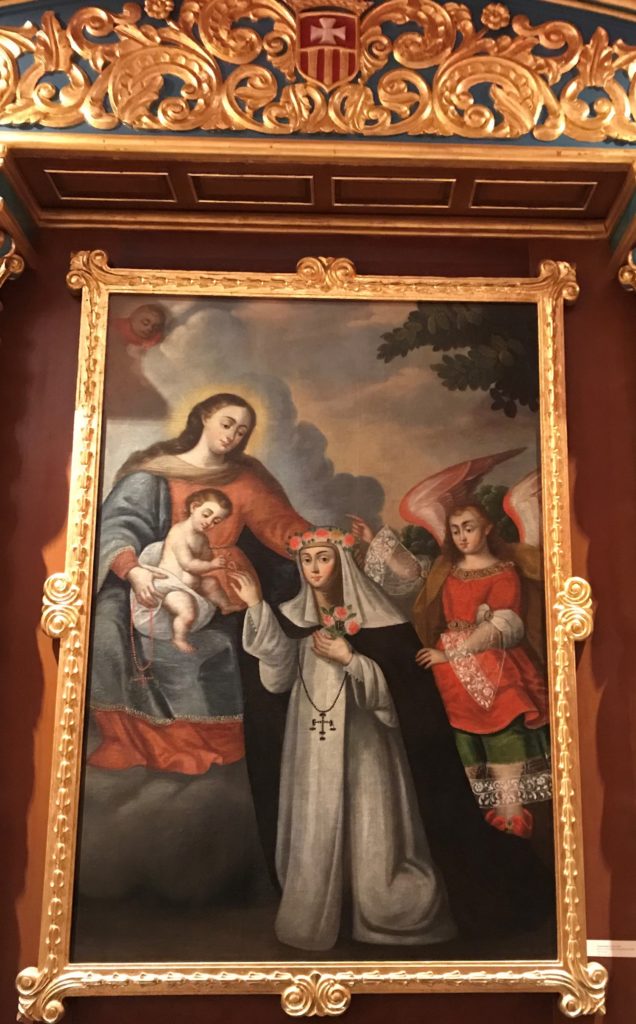
The Marriage of Santa Rosa of Lima
Santa Rosa of Lima was born in Lima, Peru in 1586 and died in 1617. Santa Rosa is the first person born in the Americas to be canonized. She is the Patroness of the Americas, of the indigenous people, and the patron saint of Peru. She was a member of the Third Order of Saint Dominic in Lima and became known for both her life of severe asceticism and her care of the needy of the city through her own private efforts. This painting depicts her marriage to the Infant Christ who presents her with a wedding ring. He is in the arms of the Virgin Mary and they are protected by a Guardian Angel. Santa Rosa is clothed in the white habit and black robe of the Lay Order of the Dominicans and holds three roses, her personal symbols. She wears a
rose crown with thorns symbolizing her suffering for Christ and a black coral cross signifying his martyrdom.

Virgin of Mercy (La Merced)
Anonymous artist, Cusco, Peru, 18th Century, Oil on canvas
The Virgin of Mercy holding Baby Jesus is shown in her most recognizable pose with an open cloak held up by Archangels Michael and Gabriel to shield and protect. The Virgin is flanked by the Saints Juan de Mata of the Order of the Holy Trinity and of the Captives, and Ramon Nonnatus, of the Royal, Celestial and Military Order of Our Lady of Mercy and the Redemption of the Captives. Both are known for their heroic rescue of slaves imprisoned by the Muslims in Africa and other Christian captives. The Virgin of Mercy wears the white robe of the Order and holds a scapular, an object of devotion to a monastic order. It has the Mercedarian crest, with its cross and red and white stripes, also seen below.
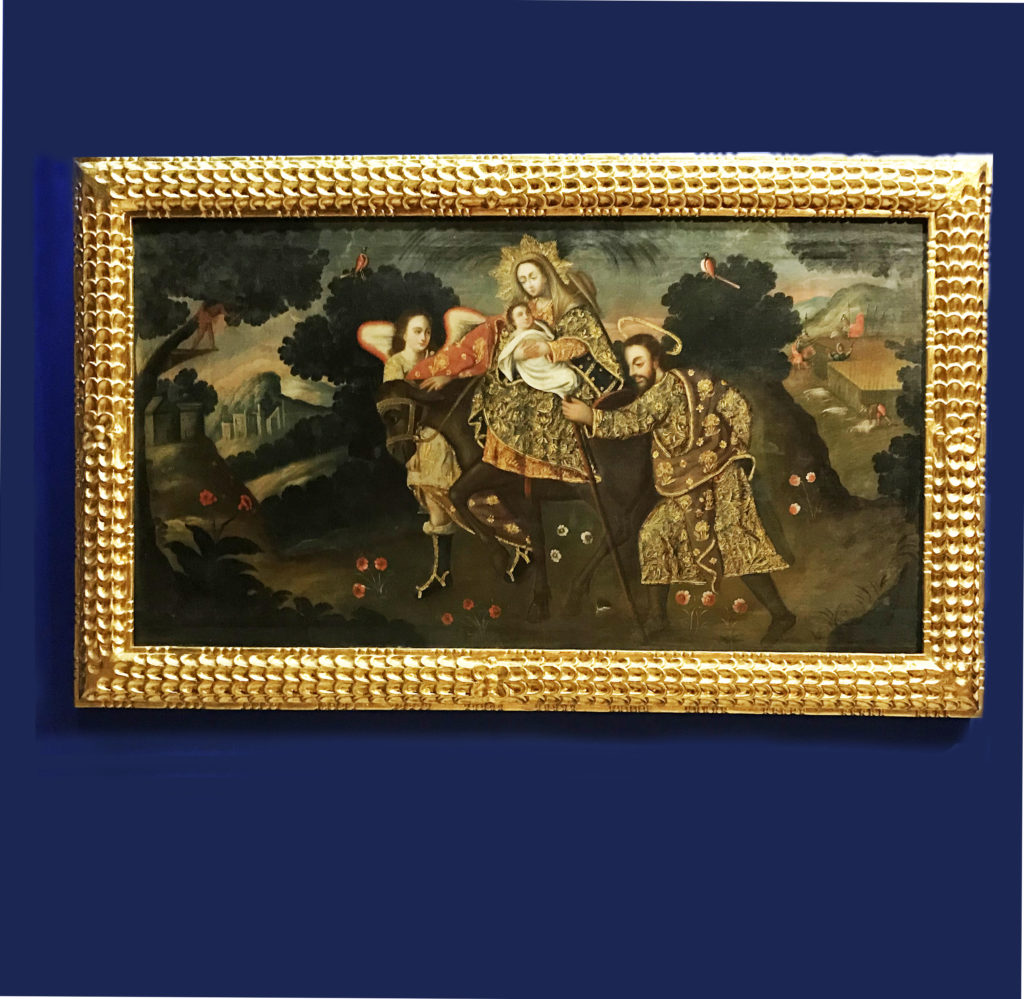
MB: What are the forthcoming plans? How are they going ahead with these pandemic times?
CD: The main goal is to install a new ceiling and to upgrade the A.C. and alarm system. This is a major construction project that will close the chapel for a few months, and I will have to remove the paintings. It will also give me an opportunity to reinstall the works, add and subtract and rearrange, which I am looking forward to doing. During the pandemic, the chapel is closed to events, concerts, tours, but the Spanish mass is said there and broadcast virtually.
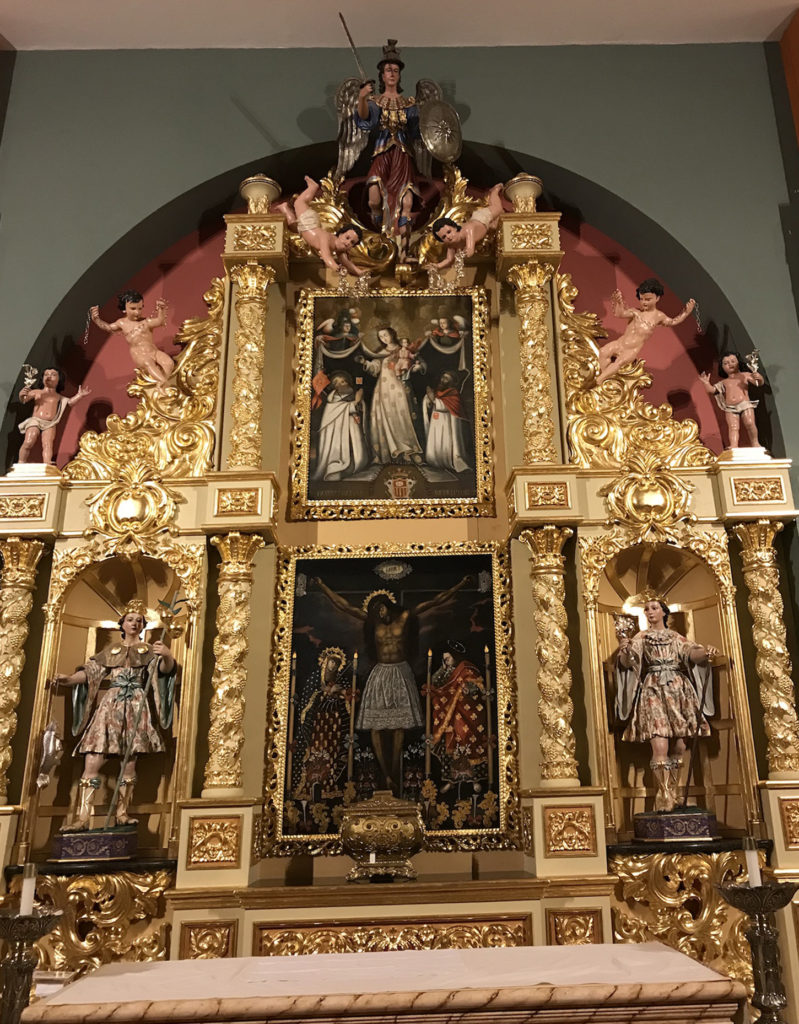
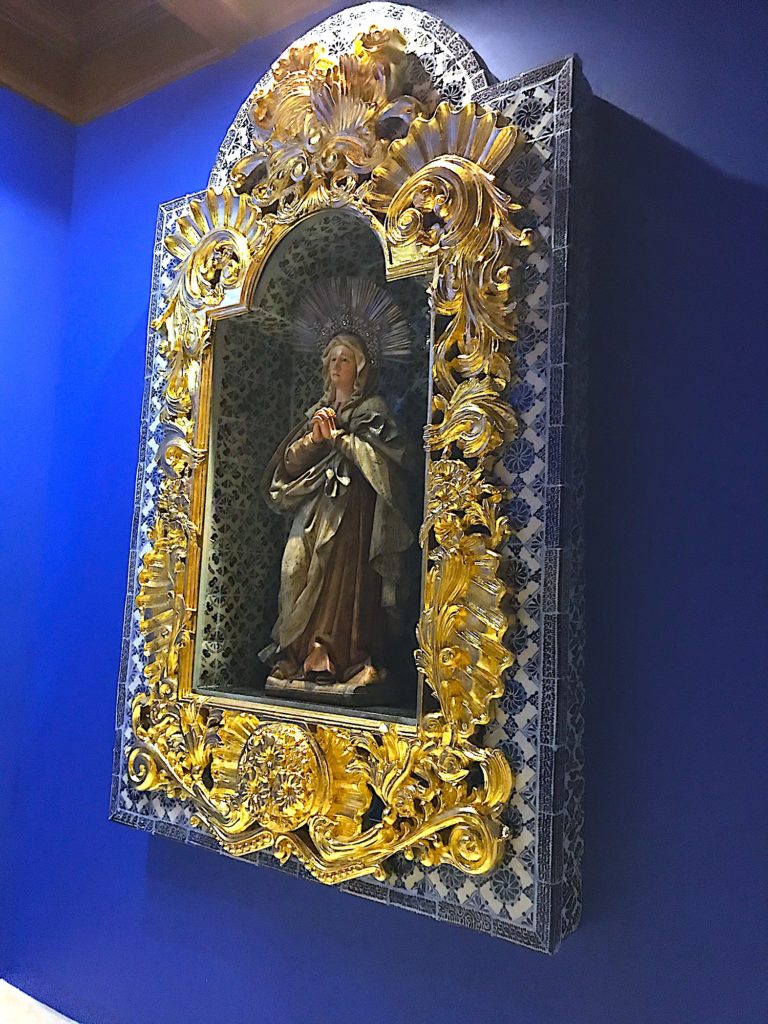

History of the Site:
La Merced Chapel, begun fifteen years ago, under the inspiration of the parish’s Peruvian community. It retains its Peruvian colonial baroque style while the materials and the artisans that has worked in the project reflect the mixed rich cultures of Miami. The interior step facing is from Alicante, Spain. Outside walls include coral rock from Dominican Republic. The outside steps are made of stone from Brazil. In the interior of the chapel, on the front altar, the small columns and side niche areas are made by craftsmen from Cochabamba, Bolivia, and are inspired by local traditional Indian carving. Other altars are made by Colombians, by Mexicans in the style of Peru. (www.colonialflorida.org)
Noteworthy is the coffered ceiling, also handmade in Cochabamba, which is currently in storage waiting for installation funding. It is to us, to take steps into supporting this magnificent cultural project, in helping through donations, fonds, or any other ways to help accomplish it. (For donations you can contact: 305.635.1331 or E: [email protected] )
@milagrosbellocurator
[email protected]
Miami, October 2021


